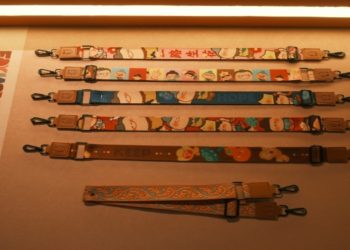The samurai sword, particularly the katana, is an iconic symbol of Japanese culture and history, representing more than just a weapon. It is deeply intertwined with the values, traditions, and ethos of the samurai class and Japan’s broader historical and cultural fabric. Revered as an object of beauty, discipline, and strength, the samurai sword occupies a central place in the story of Japan, from its feudal past to its modern-day cultural identity.
The Emergence of the Samurai Sword
The katana, often referred to as the “soul of the samurai,” emerged during Japan’s feudal period, roughly between the 12th and 17th centuries. Initially, Japanese swords followed Chinese designs, but over time, they evolved into the curved, single-edged blades that became the hallmark of the samurai class. Unlike the straight swords of earlier eras, the curvature of the katana allowed for swift, efficient cutting motions, making it an effective tool in battle. However, the sword’s significance went beyond its practical use in combat.
For the samurai, the sword was an extension of their identity and honor. Bushido, the code of the samurai, emphasized values like loyalty, honor, and discipline, and the sword was a symbol of these virtues. Owning and mastering the katana was not just about physical skill—it was about cultivating mental strength, self-control, and spiritual discipline. To this day, the katana remains a powerful representation of the samurai’s way of life.
Craftsmanship and Symbolism
Creating a samurai sword was an intricate process that reflected the deep respect Japanese culture had for craftsmanship and precision. Swordsmiths were highly regarded artisans, and the forging of a katana was seen as a sacred act. The sword was often thought to contain the spirit of the samurai, making it more than a mere weapon.
The process of making a katana involved folding layers of steel, which enhanced its strength and flexibility. The meticulous forging process could take months, and each sword was unique, reflecting the skill and artistry of its maker. These swords were not mass-produced but handcrafted with care, each one representing a blend of function and aesthetic beauty. The attention to detail, from the forging of the blade to the intricate designs on the handle and scabbard, highlighted the sword’s importance as both a tool and a work of art.
Beyond its physical attributes, the katana held profound symbolic meaning. It was believed to embody the warrior’s soul, and losing one’s sword in battle was seen as a deep dishonor. The sword was also a family heirloom, passed down through generations, carrying with it the history and legacy of a samurai family.
The Sword in Modern Japan
While the era of the samurai ended with the Meiji Restoration in the late 19th century, the cultural significance of the sword remains deeply ingrained in Japan. Today, samurai swords are prized artifacts and continue to be crafted by master swordsmiths. They are displayed in museums, collected by enthusiasts, and even used in ceremonial practices.
The influence of the samurai sword extends beyond Japan, with the katana gaining global recognition as a symbol of precision, artistry, and discipline. It has been featured in films, books, and other forms of popular culture, representing the enduring fascination with the samurai ethos.
The samurai sword is much more than a tool for battle; it is a symbol of Japan’s history, values, and culture. It embodies the virtues of the samurai—honor, discipline, and loyalty—and serves as a reminder of the rich cultural heritage that continues to influence Japan today. Whether appreciated for its craftsmanship, historical significance, or symbolic meaning, the samurai sword remains a powerful icon of Japan’s past and present.










































































